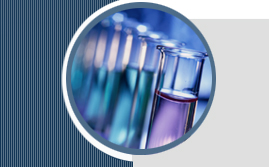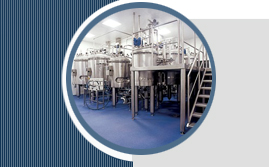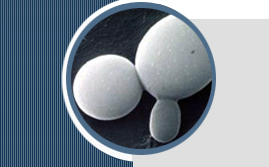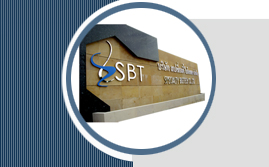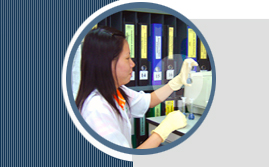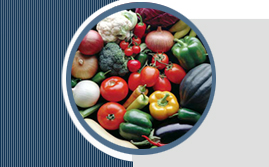| |
Swine
-Growth performance, carcass and pork quality of finisher pigs fed oat-based diets containing different levels of β-glucans. (For more detail please visit http://jas.fass.org/) -Influence of dietary beta- glucan on growth performance, nonspecific immunity, and resistance to Streptococcus suis infection in weanling pigs. (For more detail please visit http://jas.fass.org/)
-Influence of dietary ß-glucan on growth performance, lymphocyte proliferation, specific immune response and haptoglobin plasma concentrations in pigs. (For more detail please visit http:// www.blackwell.de/synergy )
-ß -Glucan enhancement of T cell IFNγ response in swine. (For more detail please visit http:// www.elsevier.com/locate/vetimm)
-Antiviral Effect of Saccharomyces cerevisiae ß -glucan to Swine Influenza Virus by Increased Production of Interferon- γ and Nitric Oxide. (For more detail please visit http:// www.blackwell-synergy.com)
Growth performance, carcass and pork quality of finisher pigs fed oat-based diets containing different levels of β-glucans
-
Fortin, W. M. Robertson, S. Kibite, and S. J. Landry
Agriculture and Agri-Food Canada, Lacombe Research Centre, Lacombe, Alberta, T4L 1W1
ABSTRACT
A study was undertaken to investigate the growth performance and carcass and meat quality of pigs (BW = 52 to 108 kg) fed oat-based (Avena sativa L.) diets containing four levels of mixed-linkage (1 →3), (1 → 4)- β-D-glucans. One hundred sixty pigs—80barrows and 80 gilts (average starting BW = 52.7 kg)—were allocated to one of five diets: a wheat-barley-basedcontrol diet and four experimental diets. The groats of Marion, a covered oat, and OT789, a hulless oat, were used to formulate four isonitrogenous and isocaloric diets to achieve 4.1, 3.3, 2.1, or 1.6% total β-glucans (as fed). Growth performance (daily gain and gain to feed ratio) was not affected (P > 0.05) by the different levels of β-glucans. Carcass yield, although lower (P ≤ 0.05) for pigs fed the control diet, was similar (P > 0.05) for pigs fed any of the experimental diets. Cutout yields were also alike (P > 0.05) across the five diets. β-glucan content had no effect (P > 0.05) on the longissimus muscle area, or, by and large, on the proportions of commercial cuts; the only exceptions were a commercial picnic from pigs fed the 2.1% diet lower (P < 0.05) relative to all other diets and a lower (P < 0.5) commercial loin from pigs fed diets 4.1 or 3.3% relative to the control diet. Furthermore, the relative proportions of total lean, total bone, and total dissectable fat in the four lean cuts (picnic, butt, loin, and ham) were not different (P >0.05) among the five diets. For pigs fed 4.1% β-glucans, the proportion of lean in each of the four major cuts was lower (P < 0.05). No differences (P > 0.05) associated with the level of β-glucans were detected for either the initial or ultimate pH mean values, the subjective assessment of color or structure of the longissimus muscle, or the instrumentally measured color (L value). Similarly, drip loss was not influenced (P > 0.05) by the level of β-glucans in the diets. Soluble protein did differ (P <0.05) among the high- to low- β-glucans diets. No differences (P >0.05) associated with diets were found for fat hardness and shear values of grilled pork chops. Chemical fat of the longissimus muscle from pigs fed 4.1, 3.3, or 2.1% β-glucans was lower (P < 0.05) compared to pigs fed the control or 1.6% β-glucans diets. In summary, no evidence of detrimental effect of β-glucans in oat-based diets, particularly at levels below 4%, was detected, lending support for the inclusion of oat into finisher diets.
Keywords: Carcasses, β -glucans, Oats, Pigs, Pork, Quality
Credited by:
ã 2003 American Society of Animal Science. All rights reserved J. Anim. Sci. 2003. 81:449–456
Influence of dietary beta- glucan on growth performance, nonspecific immunity, and resistance to Streptococcus suis infection in weanling pigs
S. S. Dritz, J. Shi, T. L. Kielian, R. D. Goodband, J. L. Nelssen, M. D. Tokach, M. M. Chengappa, J. E. Smith and F. Blecha
Department of Animal Sciences and Industry, Kansas State University, Manhattan 66506-5602, USA.
ABSTRACT
Three experiments, using 344 pigs, were conducted to evaluate the influence of beta- glucan on growth performance, neutrophil and macrophage function, haptoglobin production, and resistance to Streptococcus suis challenge in weanling pigs. In Exp. 1, 144 pigs were used to evaluate the influence of .1% dietary beta- glucan in a soybean meal- or milk protein-based diet on growth performance and neutrophil function. Pigs fed beta- glucan from d 7 to 14 after weaning had lower ADFI (P < .01) and, although not significant, ADG was lower for pigs fed beta- glucanthan for pigs fed control diets. However, no differences were observed in growth performance or neutrophil function for pigs fed control or diets containing beta- glucan from d 7 to 35 after weaning. Experiment 2 was a 28-d growth assay in which pigs were fed a diet with or without .1% beta- glucan, containing 7.5% spray-dried plasma protein and 25% dried whey from d 0 to 14 after weaning. Pigs then were fed corn-soybean mealbased diets containing 2.5% spray-dried blood meal and 10% dried whey. No differences in growth performance were observed. Experiment 3 was a 35-d assay to evaluate growth performance, neutrophil and macrophage function, and plasma haptoglobin concentration. Pigs were challenged on d 28 postweaning with intravenous S. suis. In Exp. 3, pigs were fed diets without or with .025 or .05% beta- glucan. Dietary beta- glucan did not influence neutrophil or macrophage function. However, pigs fed diets containing .025% beta- glucan had increased (P < .05) ADG and ADFI and were heavier (P < .05) on d 28 after weaning than pigs fed the control diet. No differences in feed efficiency (G/F) were detected between treatments. Pigs fed beta- glucan had decreased (P < .10) plasma haptoglobin on d 14, 21, and 28 after weaning. However, Fisher's Exact test revealed that more (P < .04) pigs fed a diet containing .025% beta- glucan died by d 12 after challenge with S. suis. In conclusion, these data suggest the existence of a complex interaction involving growth performance and
resistance to S. suis in pigs fed .025% beta- glucan.
Keywords: β - Glucan, Growth, Immunity, Streptococcus suis, Pigs
Credited by:
ã 1995 American Society of Animal Science. All rights reserved J. Anim. Sci. (73)2003, 3341-3350
Influence of dietary ß-glucan on growth performance, lymphocyte proliferation, specific immune response and haptoglobin plasma concentrations in pigs
S. Hiss and H. Sauerwein
Institut fur Physiologie, Biochemie Tiere und Hygiene der, Rheinische Friedrich Wilhelms-Universit € at, Bonn, Germany
ABSTRACT
Immunomodulatory feed additives might offer alternatives to anti-microbial growth promoters in swine production. The present study was conducted to assess the effects of ß-1,3 ⁄ 1,6 glucans, i.e. of specific yeast cell wall components, on immune function and growth performance in pigs. After weaning at 4 weeks of age, 75 piglets were allocated to 3 different groups for 4 weeks, the diet was supplemented with 0, 0.015 or 0.03% of ß-glucan, respectively. All animals were vaccinated against porcine reproductive and respiratory syndrome (PRRS). After 4 weeks, average daily gains (ADG) of ß-glucan treated pigs were not different from the controls. Feed intake was tendentiously (p < 0.1) increased at 0.03% ß-glucan, without alteration of feed efficiency. Serum haptoglobin concentrations at the end of the 4 week treatment were increased in all groups when compared to the initial levels (p < 0.001), without differences between the groups (p > 0.05). Haptoglobin levels were inversely related to ADG. Lymphocyte proliferation indices were not different in control and treatment groups. Specific vaccination responses, as quantified by the PRRS antibody titres occurred in all animals, but no relation with ß-glucan feeding was observed. Our results indicate marginal benefits of ß-glucan supplements for growth performance and no effect on the immune parameters tested. The observed trend towards increased feed intake needs further elucidation.
Credited by:
© 2003 Blackwell Verlag, Berlin J. Anim. Physiol. a. Anim. Nutr. 87(2003), 2–11
ß -Glucan enhancement of T cell IFNγ response in swine
Zhengguo Xiao a , Carlos A. Trincado b , Michael P. Murtaugh a
a Department of Veterinary and Biomedical Sciences, University of Minnesota, 1971 Commonwealth Avenue, St. Paul, MN 55108, USA
b Swine Disease Eradication Center, University of Minnesota, 1971 Commonwealth Avenue, St. Paul, MN 55108, USA
ABSTRACT
ß-Glucan has been shown to enhance anti-tumor and anti-infection functions in animals. Pigs at 4 months of age were infected with porcine reproductive and respiratory syndrome virus (PRRSV), and peripheral blood monocytes (PBMC) were isolated for the detection of interferon g (IFNγ)-producing cells. We found that soluble high molecular weight ß-glucan could increase IFNγ-producing cell frequency in a dose-dependent manner in the enzyme-linked immunospot assay (ELISPOT) in the absence of antigenic restimulation. A concentration as low as 1.6 mg/ml gave a significant increase and a similarly high enhancement was achieved at concentrations from 3.2 to 100 mg/ml. In PRRSV-specific IFNγ ELISPOT, soluble ß -glucan elicited increased PRRSV-specific responses at concentrations from 3.2 to 50 mg/ml, but not at 100 mg/ml, whereas insoluble ß -glucan had no effect. Soluble b-glucan augmented the porcine cellular immune response in an antigen-independent fashion, whereas insoluble ß -glucan had no activity. This finding suggests that soluble ß -glucan may enhance innate antiviral immunity against PRRSV.
Keywords: PRRSV; Interferon-g; Swine; Veterinary immunology; Sus scrofa
Credited by:
© 2004 Elsevier B.V. All rights reserved. Veterinary Immunology and Immunopathology 102 (2004), 315–320
Antiviral Effect of Saccharomyces cerevisiae ß -glucan to Swine Influenza Virus by Increased Production of Interferon- γ and Nitric Oxide
K. Jung , Y. Ha , S.-K. Ha , D. U. Han , D.-W. Kim , W. K. Moon and C. Chae
College of Veterinary Medicine, Seoul National University, Seoul, Republic of Korea
ABSTRACT
The aim of these experiments was to investigate the potential antiviral effect of Saccharomyces cerevisiae ß -glucan on the pneumonia induced by swine influenza virus (SIV). Forty colostrum-deprived 5-day-old piglets were randomly divided into four groups of 10. The 20 pigs in groups 1 and 2 were administered Saccharomyces cerevisiae ß -glucan orally (50 mg/day/pig; En-Bio Technology Co., Ltd) for 3 days before SIV infection and those in groups 3 and 4 were given culture medium/diluent alone. Groups 1 and 3 were inoculated intranasally with 3 ml of tissue culture fluid containing 2 x 10 6 tissue culture infective doses 50% (TCID 50)/ml of SIV and those in groups 2 and 4 were exposed in the same manner to uninfected cell culture supernatant. The microscopic lung lesions induced by SIV infection (group 1 pigs) were significantly more severe than those induced by infection in animals pre-administered ß -glucan (group 3) ( P < 0.05). Significantly more SIV nucleic acid was detected in the lungs of pigs experimentally infected with SIV only (group 1) at 5, 7 and 10 days post-inoculation (dpi) compared with lungs from pigs pre-administered ß -glucan and infected with SIV (group 3) ( P < 0.05). The concentrations of interferon- γ (IFN- γ ) and nitric oxide (NO) in bronchoalveolar lavage fluid from pigs pre-administered ß -glucan and infected with SIV (group 3) were significantly higher than for any other group at 7 and 10 dpi for IFN- γ , and at 5, 7 and 10 dpi for NO ( P < 0.05). Saccharomyces cerevisiae ß -glucan reduced the pulmonary lesion score and viral replication rate in SIV-infected pigs. These findings support the potential application of ß -glucan as prophylactic/trea
Copyright ©2005 . Specialty Biotech Co.,Ltd. All Rights Reserved.
Amatanakorn Industrial Park 700/137 Moo 5, Klongtumroo
Muang, Chonburi 20000 ThailandTel +66 (0)3845-8698 Fax +66 (0)3845-8697
Email: contact@sbtthai.com
tment agent in influenza virus infection.
Credited by:
© 2004 Blackwell Verlag, Berlin J. Vet. Med. 51 (2004) , 72–76 |
|
